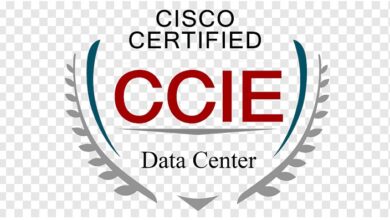Innovative Technologies Transforming Security Companies

In today’s rapidly evolving world, technology plays a crucial role in enhancing security services. With the rise of sophisticated threats and increasing security challenges, traditional methods alone are no longer sufficient. Technology provides advanced tools and systems that significantly improve the ability to prevent, detect, and respond to security incidents. From surveillance systems to access control and real-time monitoring, innovative technological solutions are transforming the way security is managed and delivered. Embracing these advancements is essential for ensuring the safety and protection of people, assets, and information in various settings, including residential, commercial, and public spaces.
Focus on Technological Advancements
Several key technologies are currently transforming security companies, making it more efficient and effective. Among these are artificial intelligence (AI), drones, and biometric systems. AI enhances surveillance accuracy and predictive analytics, enabling proactive threat prevention. Drones provide unparalleled aerial surveillance and rapid incident response capabilities. Biometric systems offer secure access control and advanced authentication processes. These technologies, among others, are revolutionizing security operations, setting new standards for safety and efficiency.
Artificial Intelligence
AI in Surveillance Systems
Artificial intelligence has become a cornerstone of modern surveillance systems. AI-powered cameras and facial recognition software are now widely used to improve surveillance accuracy and effectiveness. These advanced systems can automatically detect and identify individuals, analyze behaviors, and recognize patterns that might indicate suspicious activity. The integration of AI in surveillance enables security personnel to monitor large areas with greater precision and respond more swiftly to potential threats. AI-driven surveillance not only enhances security but also reduces the workload on human operators, allowing them to focus on more critical tasks.
Predictive Analytics
AI’s role extends beyond surveillance to include predictive analytics, which is pivotal in anticipating and preventing security threats. By analyzing vast amounts of data from various sources, AI algorithms can identify trends and predict potential security incidents before they occur. This proactive approach allows security companies in Los Angeles to implement preventive measures and allocate resources more effectively. Predictive analytics, powered by AI, transforms security from a reactive to a proactive discipline, significantly improving overall safety and security outcomes.
Drones in Security Operations
Aerial Surveillance
Drones, or unmanned aerial vehicles (UAVs), have emerged as valuable tools in security operations, particularly for aerial surveillance. They can cover large areas quickly and provide real-time video feeds, making them ideal for monitoring expansive properties, events, and critical infrastructure. Drones equipped with high-resolution cameras and sensors can capture detailed images and data from vantage points that are otherwise difficult to access. This capability enhances situational awareness and allows security personnel to detect and respond to threats more efficiently.
Rapid Response and Incident Management
In addition to surveillance, drones play a crucial role in rapid response and incident management. They can be deployed swiftly to the scene of an incident, providing immediate visual information and supporting decision-making processes. Drones can also be used to assess damage, locate missing persons, and deliver essential supplies in emergency situations. By offering real-time data and enhancing operational agility, drones contribute to more effective and timely incident management, ultimately improving security outcomes.
Biometric Systems
Access Control and Identification
Biometric systems have become a critical component in modern security strategies, particularly in access control and identification processes. Utilizing unique biological characteristics such as fingerprints, retina patterns, and facial features, biometric systems provide a highly secure method for verifying identities. This technology ensures that only authorized individuals can access restricted areas, significantly reducing the risk of unauthorized entry. Biometric access control is widely used in various settings, including government buildings, corporate offices, and airports, offering a robust solution to enhance security.
Enhancing Authentication Processes
Beyond access control, biometric systems enhance overall authentication processes, reducing the likelihood of identity fraud and improving security efficiency. Traditional methods like passwords and key cards can be easily compromised, but biometric data is unique to each individual and much harder to replicate. This makes biometric authentication a more reliable and secure method for verifying identities. By integrating biometric systems, security protocols become more stringent, providing higher levels of protection against unauthorized access and potential security breaches.
Smart Security Solutions
Integration of IoT Devices
The integration of Internet of Things (IoT) devices into security systems is transforming traditional security practices into smart security solutions. IoT devices, such as smart cameras, sensors, and alarms, are interconnected through a central system, allowing seamless communication and coordination. This interconnectedness creates a smart environment where security measures are automated and optimized for better efficiency. For instance, smart sensors can detect unusual activity and automatically alert security personnel, enhancing response times and reducing manual intervention.
Real-Time Monitoring and Alerts
One of the significant advantages of smart security solutions is their capability for real-time monitoring and instant alerts. IoT devices continuously collect and transmit data, which is then analyzed by central security systems. This enables real-time threat detection and allows security teams to respond immediately to any potential issues. Instant alerts and notifications ensure that security personnel are always informed and can take prompt action to mitigate risks. This real-time capability is crucial for maintaining high levels of security and preventing incidents before they escalate.
Cloud-Based Security Platforms
Centralized Data Management
Cloud-based security platforms offer numerous benefits, including centralized data management. These platforms enable the aggregation and storage of security data from various sources in a single, accessible location. This centralization simplifies data analysis, reporting, and retrieval, making it easier for security teams to manage and utilize information effectively. Cloud-based solutions also facilitate seamless integration with other security systems, ensuring comprehensive data coverage and improved operational efficiency.
Scalability and Flexibility
Another advantage of cloud-based security platforms is their scalability and flexibility. As security needs evolve, cloud-based solutions can be easily scaled up or down to accommodate changing requirements. This flexibility is particularly beneficial for organizations that experience fluctuations in security demands, such as during large events or in response to emerging threats. Cloud-based platforms also offer the flexibility to integrate new technologies and updates without significant disruptions, ensuring that security operations remain current and effective.
Cybersecurity Measures
Protection Against Cyber Threats
In an increasingly digital world, cybersecurity measures are essential for protecting digital assets and infrastructure. Security guard companies must implement robust cybersecurity protocols to safeguard sensitive information from cyber threats such as hacking, phishing, and malware. This includes using advanced encryption techniques, secure communication channels, and regular security audits to identify and address vulnerabilities. Effective cybersecurity measures prevent unauthorized access, data breaches, and other cyber incidents that could compromise security operations.
Integration with Physical Security
The integration of cybersecurity with physical security is becoming more prevalent, creating a comprehensive security approach that addresses both digital and physical threats. By combining these two aspects, security companies can provide holistic protection that covers all potential vulnerabilities. For example, access control systems that use biometric authentication can be enhanced with cybersecurity measures to ensure that digital records are secure. This integrated approach ensures that all security aspects are addressed, providing a more robust and resilient security framework.
Case Study: Security Companies in Los Angeles
Implementation of Advanced Technologies
Security companies in Los Angeles have been at the forefront of adopting advanced technologies to enhance their services. These companies have integrated AI-powered surveillance systems, drones, biometric access controls, and smart security solutions to create a comprehensive and modern security framework. For instance, AI-driven cameras and facial recognition software are widely used in high-traffic areas like airports and major public events to ensure quick identification and response to potential threats. Drones are deployed for large-scale surveillance, providing a bird’s-eye view of critical areas and aiding in rapid incident response.
Success Stories
The implementation of these advanced technologies has led to significant success stories in Los Angeles. One notable example is the use of AI and drone technology at large events such as the Los Angeles Marathon and major concerts. These technologies have enabled security teams to monitor vast crowds efficiently, detect suspicious activities, and respond swiftly to incidents, thereby ensuring public safety. Another success story is the integration of biometric systems in corporate environments, which has drastically reduced incidents of unauthorized access and enhanced overall security. These examples highlight how the adoption of innovative technologies can lead to improved security outcomes and higher levels of safety.
Future Trends in Security Technology
Emerging Technologies
Looking ahead, several emerging technologies have the potential to further transform the security industry. Quantum computing, for instance, promises to revolutionize data encryption and decryption processes, making security systems more robust against cyber-attacks. Advanced robotics are also on the horizon, offering enhanced capabilities for patrolling and surveillance, as well as interaction with the public in various security scenarios. Additionally, developments in edge computing could allow for faster processing of data at the source, reducing latency and improving real-time decision-making in security operations.
Industry Predictions
As these emerging technologies continue to develop, they are expected to shape the future of security services and operations significantly. Quantum computing will likely lead to more secure communication channels and stronger data protection measures. Robotics will play a crucial role in automating routine security tasks, allowing human security personnel to focus on more complex and strategic activities. The integration of edge computing with AI and IoT devices will enhance the responsiveness and efficiency of security systems, providing real-time insights and facilitating proactive measures. These advancements will drive the security industry towards more sophisticated, efficient, and effective solutions, ensuring better protection for clients and communities.
Summary of Key Points
In summary, the security industry is undergoing a significant transformation driven by innovative technologies. AI, drones, biometric systems, smart security solutions, cloud-based platforms, and cybersecurity measures are all playing pivotal roles in enhancing security services. Case studies from Los Angeles demonstrate the successful implementation and positive impact of these technologies. Emerging trends such as quantum computing and advanced robotics promise to further revolutionize the industry, leading to more secure and efficient operations.
Final Thoughts
As the security landscape continues to evolve, it is essential for security guard companies to stay updated with the latest technological advancements. Embracing these innovations will enable companies to provide higher levels of protection, respond more effectively to threats, and ensure the safety and security of their clients and communities. The continuous evolution of security technology underscores the need for ongoing adaptation and improvement, positioning the security industry to meet the challenges of the future with confidence and resilience.



